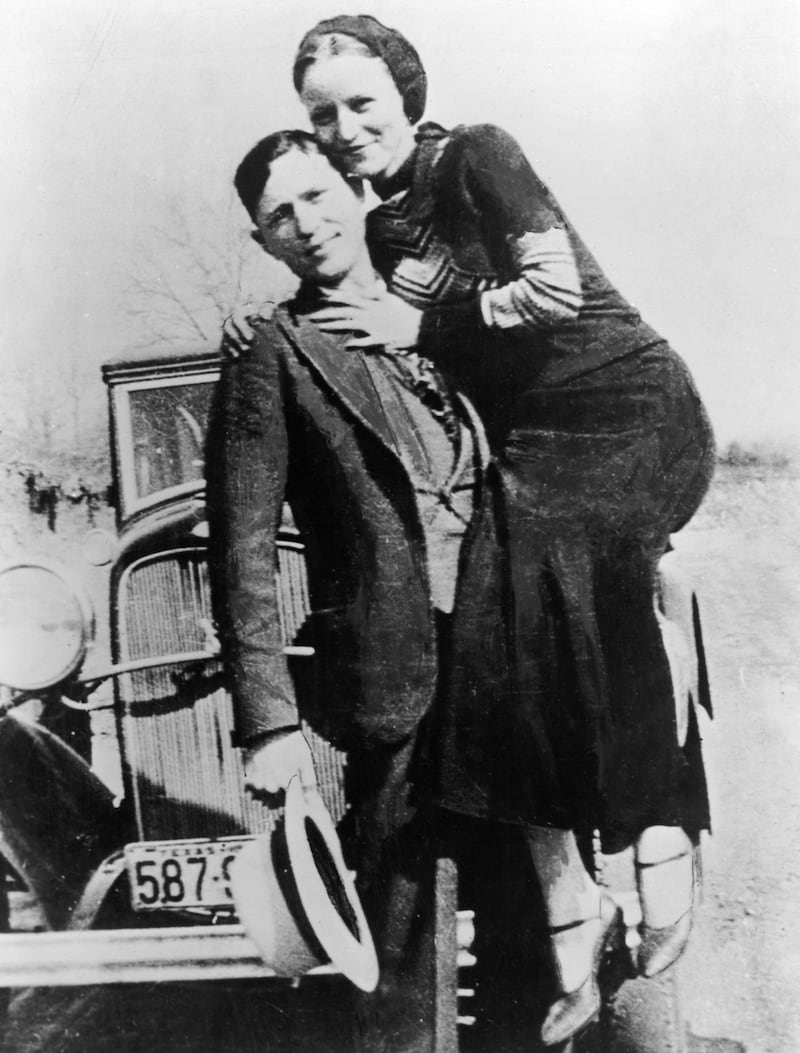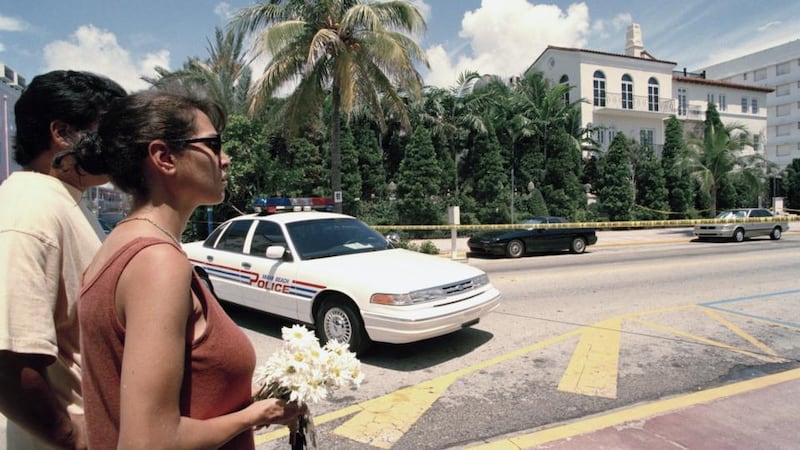As consumers, we know that multiple influences shape fashion and the clothes we wear – nostalgia, films, street trends, music and politics are the most obvious. But what about crime? Has it ever occurred that crime and criminals have influenced your fashion choices, the price of your clothes or the labels that you love?
Not only do major crime cartels control illegal, counterfeit manufacturing and the underground labour that makes fake designer clothes and bags, they also have a reach into the legitimate fashion industry.
Recent reports in the UK found garment factories in Leicester paying exploitative wages of £3.50 per hour (£5.22 below the minimum wage) and non-compliance with Covid-19 work guidelines, bringing claims of forced labour and modern slavery and highlighted issues such as debt bondage, trafficking, and health and safety abuses in the wider fashion supply chain.
But the world of high style always been aspired to by those with low morals, both in real life and popular culture. Domestically, this is seen through the Criminal Asset Bureau’s designer hauls or the christening of our own criminal Dublin Gucci Gang to Love/Hate’s Nidge with his extensive collection of expensive trainers.
Similarly in film, Scarface’s white suits and silk shirts, complemented by his girlfriend Elvira Hancock’s pristine tailoring semaphore the wealth and status generated by his drug empire.
Murderous style guides
In popular culture, criminal chic and fashion inspiration from high profile felons, is not new. From the 18th century onward, with increased literacy and growing newspaper circulation, how criminals – especially female murderers – dressed emerged as an unlikely style guide.

In 1930s America, Bonnie and Clyde dazzled with their spree of violence and style. Bonnie Parker caught depression-era public imagination in her beret, T-bar heels, slim fitting knits and bad-girl glamour. The 1960s film based on their exploits, starring Faye Dunaway, was major fashion news with costumes by designer Theadora Van Runkle ushering in the era’s midi skirt.
Another unlikely criminal style icon was heiress Patty Hearst (grand-daughter of William Randolph Hearst) who gained cult status when she was photographed in her beret with an M1 carbine gun in front of the Symbionese Liberation Army logo in 1974 (she had been kidnapped by the terrorist group and subsequently participated in their criminal activities under duress).
In the 1990s the emergence of gangster rap saw a wardrobe of heavy gold jewellery, designer trainers and branded sportswear favoured by drug dealers, street gangs and prison inmates become an influential street style look. It was eventually adopted by middle-class frat boys, which is ironic, given that the style of wearing saggy, low-slung trousers without a belt emulated the look of offenders whose belts and shoe-laces were removed in prison.

In the 1990s when Patrizia Gucci, the wife of Maurizio Gucci, scion of the luxury dynasty, had him executed by a hit-man, a luxury brand experienced criminality from within. Patrizia served 18 years of a 29 year jail sentence for her estranged husband’s murder. The day she was sentenced, Gucci stores around the world displayed a pair of sterling silver handcuffs in their windows. It was an epic tale of “murder, madness glamour and greed” that inspired a book, The House of Gucci by Sara Gay Forden, which is now being made into a film starring Lady Gaga.
In 1997 designer Gianni Versace was assassinated outside his Miami mansion by Andrew Cunanan, a hustler and serial killer with aspirations to Versace’s world of glamour and style. The presence of a dead dove at the execution led to speculation that Versace had links to the ’Ndrangheta organised crime group stretching back to his mother’s dress making business in Calabria – a claim denied by the Versace siblings and the company.
Versace himself knew the importance of celebrity to his business and wasn’t averse to cultivating stars with criminal records; he boasted that Tupac Shakur was wearing Versace both on the day he went into prison and when he was discharged.

Strange systems
So could organised crime back an international designer and use his company to launder money? The concept seemed far-fetched until 2006, when Italian writer Roberto Saviano published his sensational book Gomorrah, about the violent Neapolitan mafia, the Camorra, and explained how they had inserted themselves into the very heart of Italian luxury fashion.
The book cited how in Naples and Campania, post de-regulation in the 1950s, a maze of small factories had emerged who made goods for major Italian brands via a unique auction system. These factories didn’t pay taxes or comply with labour laws and operated in a cash economy. They were ripe for infiltration and corruption and the Camorra came to control them entirely.
The factories were loaned money by the Camorra to buy fabric to make orders for legitimate brands; whoever completed the order first and to a superior standard had their garments purchased, those that lost out, kept the garments and sold their output via the Camorra’s black market. Because the Naples workforce had decades of expertise working for Italy’s most prestigious designers, the clothes weren’t typical counterfeits but rather “genuine” fakes made from authorised patterns and fabrics. All they were missing was the brand label.
This system contributed to a situation whereby today 10 per cent of all the fashion products sold in Europe are now counterfeits. Organised crime and its involvement in counterfeiting luxury brands is calculated to take in excess of $500 billion from the global economy annually.
Global racket
Fast fashion, internet shopping and a younger generation weaned on a disposable “wear and throw” culture has led to a huge increase in counterfeiting. Rogue websites masquerading as genuine brands also sell copy-cat merchandise from hundreds of thousands of sites.
Counterfeiting is now a massive global racket run by violent crime syndicates who deal in drugs, weapons, child prostitution, human trafficking and terrorism. It is never a victimless crime.
Child labour is a particularly grim aspect of counterfeit operations. Workshops can feature illegal workers who have been sold into labour as children. They live and work in tenement conditions with children as young as eight sleeping in slum dormitories. One appalling case cited by Dana Thomas in her book, De Luxe: How Luxury Lost Is Lustre, was of an investigator who discovered child workers who had had their legs broken and then tied together to prevent the bones from mending properly. The factory owner did it because the children wanted to go out and play.
If one positive comes from the current pandemic it may be the overhaul of consumerism so that the demand for counterfeits will be undermined by a desire for sustainability, authenticity and transparency. Let's hope this shabby trend is out of fashion in the post-Covid world.










